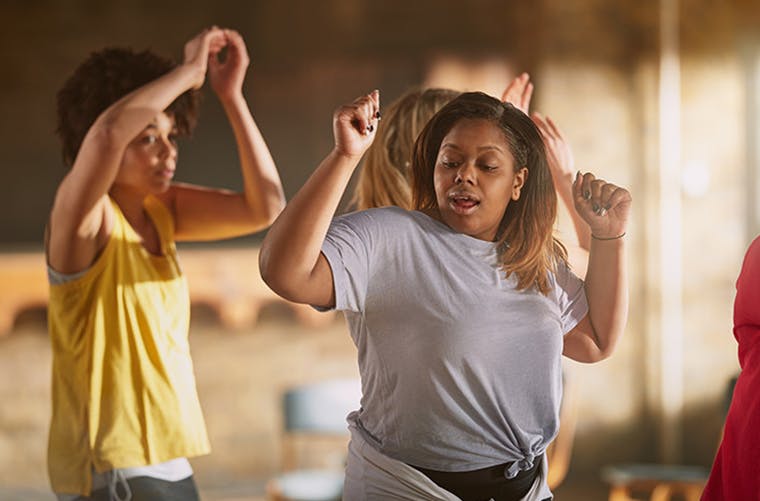How I Went from Couch Potato to Half-Marathon Runner

Danielle Wallach couldn’t get any exercise routine to stick—until she started training for a half marathon.
Danielle Wallach is living proof that even the most exercise-averse can become runners. The Denverbased ob-gyn spent her 20s and early 30s clocking 80-hour workweeks to complete her residency, rarely having time to see friends and family, let alone squeeze in a workout. Exercise, she reasoned, was something other people did and required more effort than she could muster.
Then, in 2015, after starting her own practice, Wallach’s energy began to wane. “I’d feel tired even after a solid eight hours of sleep,” Wallach, now 35, says. “Or a small cold would knock me off my feet for weeks, which was really unusual for me.” Although she maintained a medically healthy weight, her metabolism wasn’t what it used to be, either. Shirts she’d worn for years didn’t fit right anymore, and her pants were too snug.
Worried she had a thyroid problem or worse, Wallach asked her doctor to do a comprehensive blood workup. When it came back normal, her physician suggested her sedentary lifestyle could be the culprit. “I didn’t think her theory was correct because even though I didn’t work out, I was on my feet a lot at the hospital delivering babies,” she says. “I decided to take her advice anyway because I didn’t know what else to.”
Over the course of the year, Wallach dabbled in everything from CrossFit to Pilates in an effort to exercise regularly. But she found herself caught in a bad cycle: try a new workout; get frustrated or bored; stop exercising for several weeks; and repeat. Each “failure,” as she puts it, made it harder to feel motivated the next time. “I’d beat myself up for not getting these complicated exercises right and I’d give up,” she says. “Then I’d get even more angry with myself because I felt it shouldn’t be so difficult to work out consistently.”
Wallach felt defeated and would dread working out. But a friend who had recently completed a half marathon convinced her to give long-distance running a shot, even though Wallach hadn’t run more than a mile or two since high school gym class. “Her training schedule was structured and straightforward, which really appealed to me,” Wallach says. “Training would last 12 or so weeks, and if I hated it, I could stop. It seemed less overwhelming than, ‘OK you have to work out every day for the rest of your life in order to be in shape.’” Feeling inspired, she signed up for a half marathon in Denver in 2015.
Wallach researched training schedules online and chose one for beginners that allowed her to alternate between running and walking in the first few weeks, so she could ease into her new routine. Still, she says training for a half marathon was harder than she anticipated. There were aching muscles and a bout of shin splints, not to mention overall exhaustion. “After my third run, I was just so tired that I broke down crying,” she says. “The thought of finishing a 13-mile race seemed impossible.”
But, Wallach says, she was able to lace up day after day by focusing only on that week’s run, rather than the race itself. Running alone helped her feel comfortable if she ran slowly or had to stop to catch her breath. And outside of her runs, her friends cheered on her progress during countless phone calls. While Wallach skipped three runs early on in her training, by week four, she noticed a change. “It’s funny, so many runners I know told me about this high they’d get when they were out for a long jog, and I always thought that was a little crazy. But a few weeks into training, I noticed that jogging was turning therapeutic. I’d have a stressful day at work and look forward to just getting outside by myself for an hour or so,” she says.
On the morning of the half marathon, Wallach says she felt a mix of excitement, nervousness, and utter dread. “I wanted to vomit. My family came out to watch me, and I was terrified I wouldn’t be able to finish,” she says. “But once the race started, everything melted away, and I just sort of went into autopilot mode.” When she crossed the finish line just over 2 ½ hours later, she cried—this time, tears of joy. “I was so happy that I signed up for a second half marathon the following day,” she says.
Today, Wallach has completed three half marathons and is training for her fourth. Her energy is restored and her clothes fit properly again. But the main change, she says, is that she no longer looks at going out for a jog as a chore: “It’s become my way to stay sane!”
© Meredith Corporation. All rights reserved.







































